Landmark Comic Book Storylines Part 5: 2000-2010
Everything old is new again
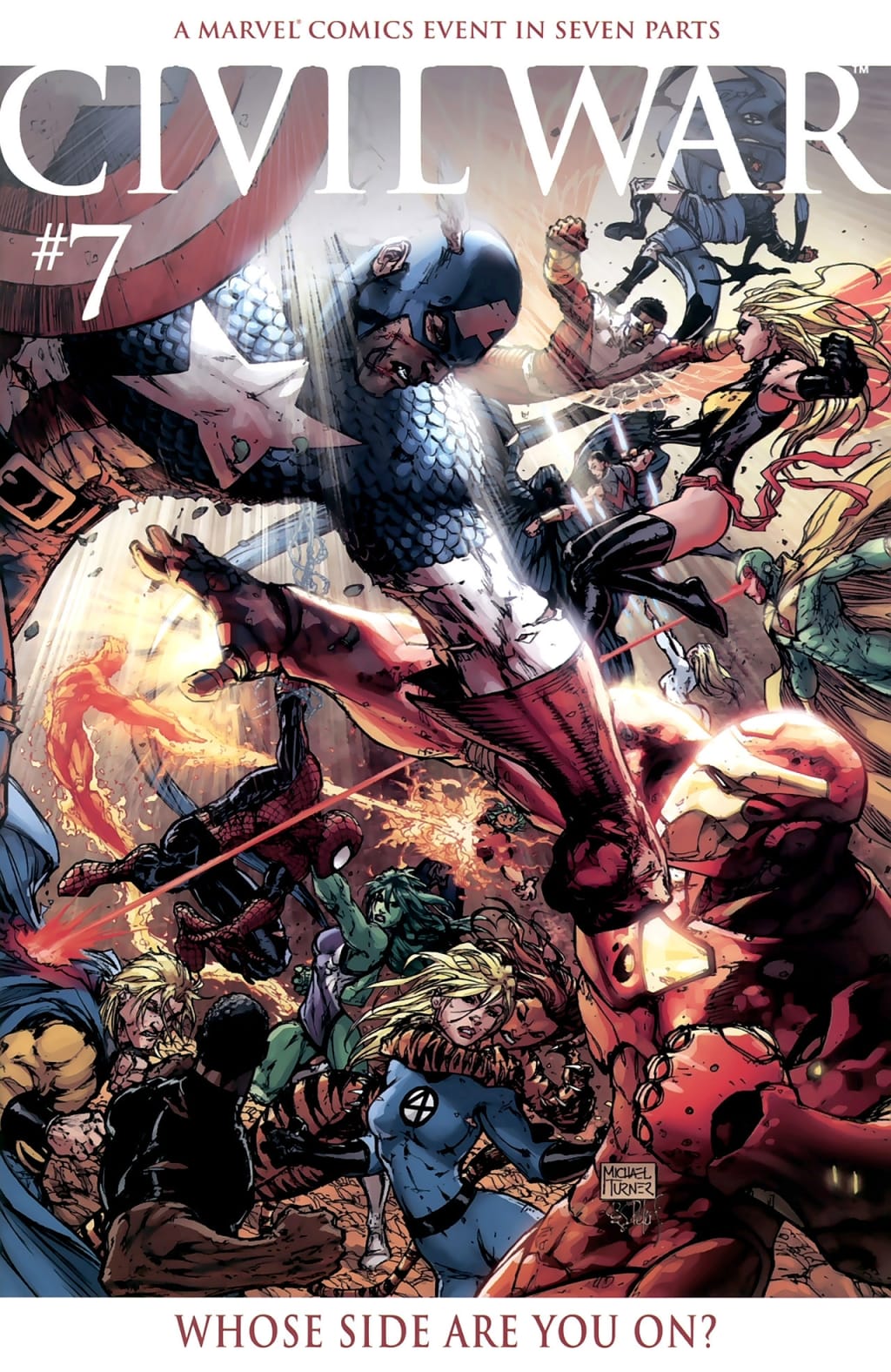
The beginning of the 21st century saw huge changes in comics. After the speculator-driven explosion of the 90s, the industry imploded. Marvel nearly went bankrupt and had to restructure, and both Marvel and DC tried to bring back powerhouse creators who had left to work at other publishers, or start companies of their own. In 0rder to bring back those creators, and the readers who were turned off by the 90s, Marvel and DC relied more on sub-imprints such as Marvel Max, Marvel Knights, and Vertigo that gave creators the ability to use more mature themes and do things they could never do with mainstrea titles. Digital comics caught on, and Marvel had more success with movies featuring the X-Men and Spider-Man. Things were changing for the better.
1. Punisher: Welcome Back, Frank
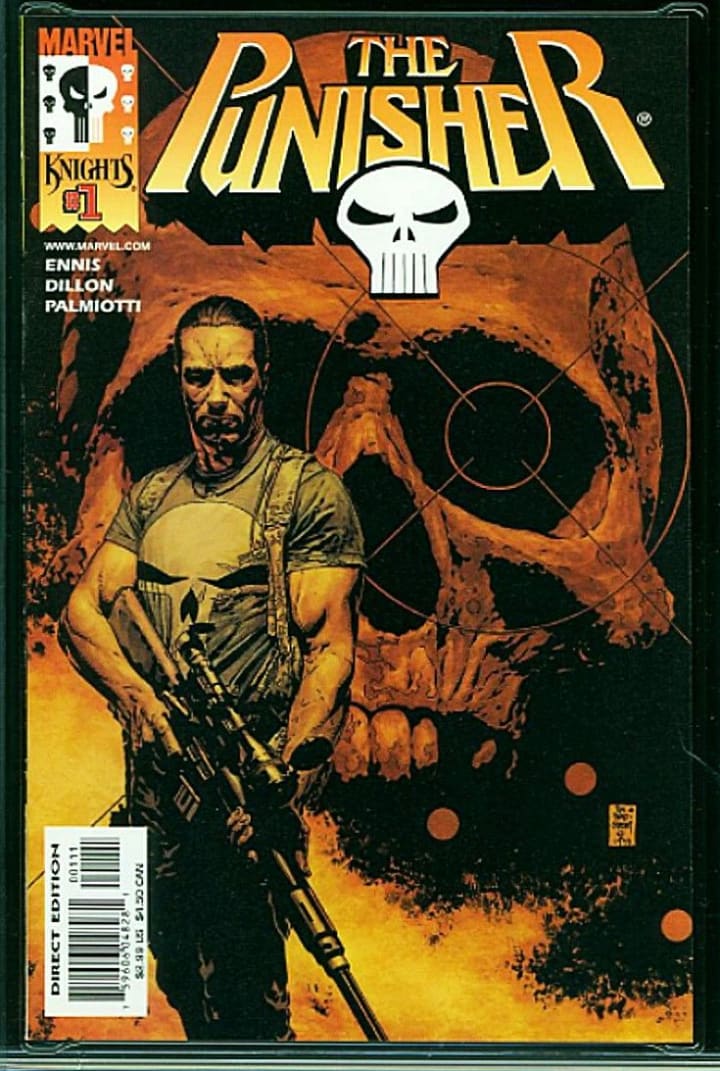
This 12-issue series, by the "Preacher" team of writer Garth Ennis and artist Steve Dillon, brought the Punisher back to his roots as a brutal roots as an urban vigilante waging a war against crime, particularly organized crime, after the 90s made the Punisher one of the most over-exposed, tired, and cliched of the decade. By the end of the 90s, the Punisher had been revealed to have been a former police officer and seminary student, he became an agent of S.H.I.E.L.D., he was temporarily black, and he was killed, then reborn as an avenging angel with supernatural weapons. Ennis knew that all of those things were horrible to the point of being vomitous crimes against the character and storytelling itself. The Punisher is the definition of an anti-hero - a man who has a crusade that in itself is good, but his methods may in themselves be bad.
2. Punisher: Born
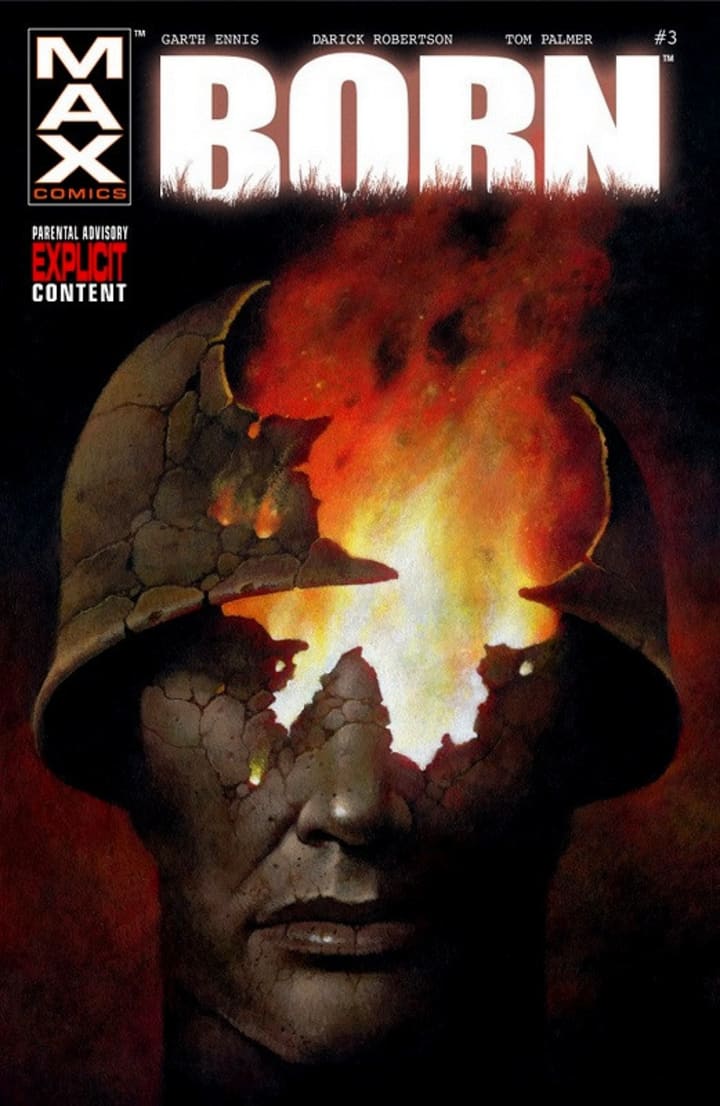
Garth Ennis proved himself to be the premiere Punisher writer in this mini-series that provides the definitive origin of the character. Similar to Batman's origin, the Punisher's origin was fairly well-known. Batman's parents were killed in front of him by a criminal when he was a child. The Punisher's wife and children were killed in front of him by criminals shooting at each other. Both swore a war on crime from that point on. But as with Frank Miller's "Batman: Year One," "Born" retells the story in a way that makes it all new, and a much better story.
Here, Ennis shows that the Punisher wasn't born in a park when his family was killed. He was born when Frank Castle was in Viet Nam, a highly-trained soldier doing the job with the rest of his unit when they are the targets of a relentless attack by the Viet Cong. When help finally arrives days later, Castle is the only survivor. His unit is dead, the attacking Viet Cong are dead, hundreds are dead. And Frank Castle is a transformed man. He may have gone home from the war and tried to raise a family, but the war was still inside, and the seeds of the Punisher had been planted.
3. Ultron Unlimited (Avengers Vol. 3 0, 19-22)
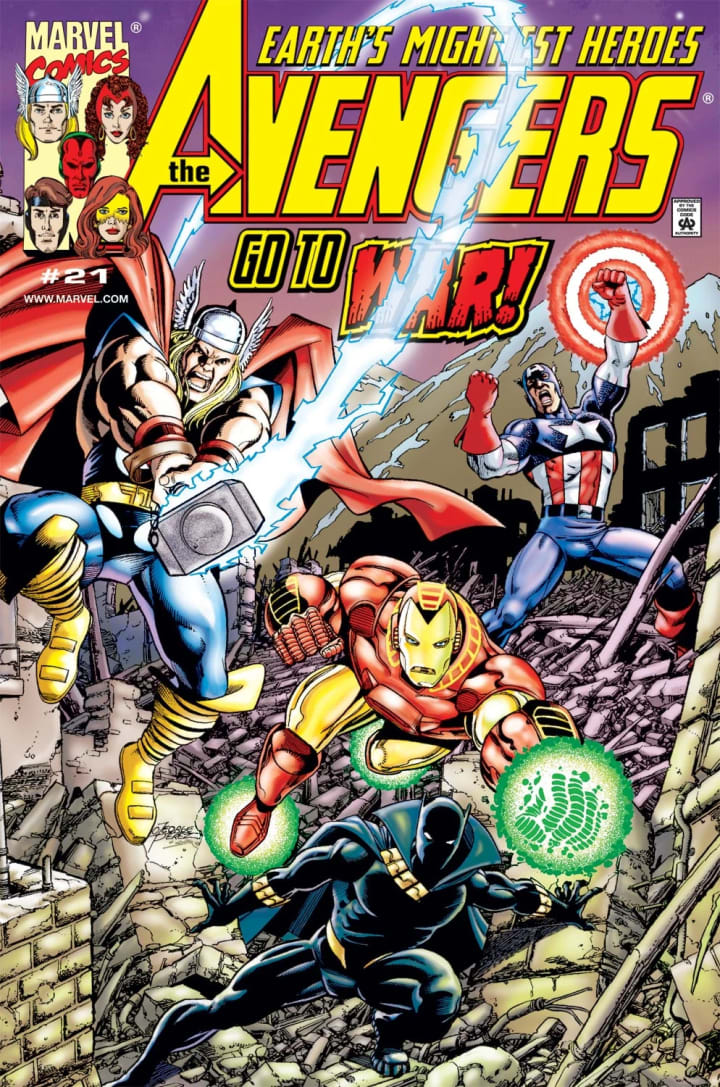
Writer Kurt Busiek and artist George Perez had arguably the best run on the Avengers of all time. At the very least they had the best run since writer Jim Shooter and Perez (and later John Byrne) were on the title in the 70s. This storyline is one of the most memorable in the run, and like the rest of the series, it brings back the greatness of one of the Avengers' greatest villains: Ultron. The Avengers at full strength, as they are in this series with members including Captain America, Iron Man, Thor, Vision, Scarlet Witch, Black Panther, Ms. Marvel, and Wonder Man, are an incredible force. But stories like this make the reader wonder how they could possibly win.
The climax of this story features one of the greatest Avengers scenes of all time, seen below. Thor rarely gets to cut loose, he's rarely damaged, and he's usually larger-than-life. But in this scene he smashes in a wall and simply says enough is enough. Not with an exclamation point. With a period. Outstanding.
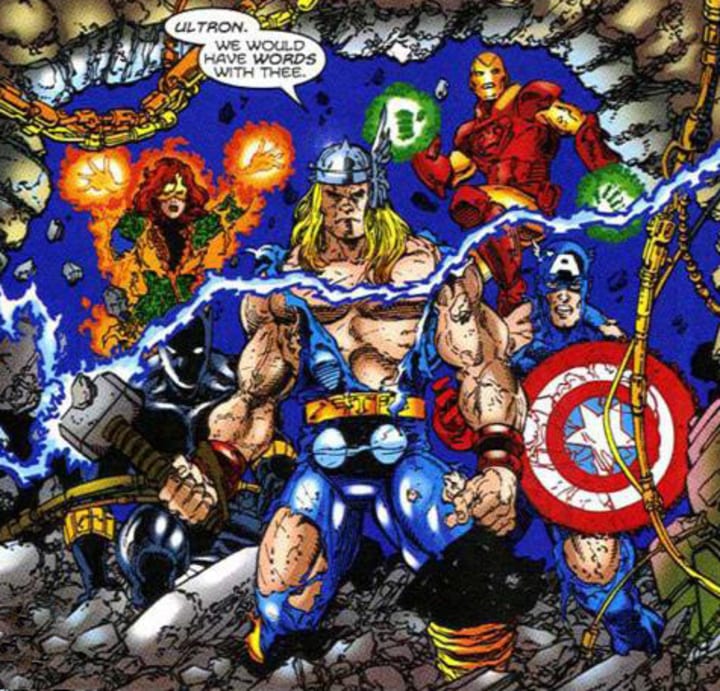
4. Justice
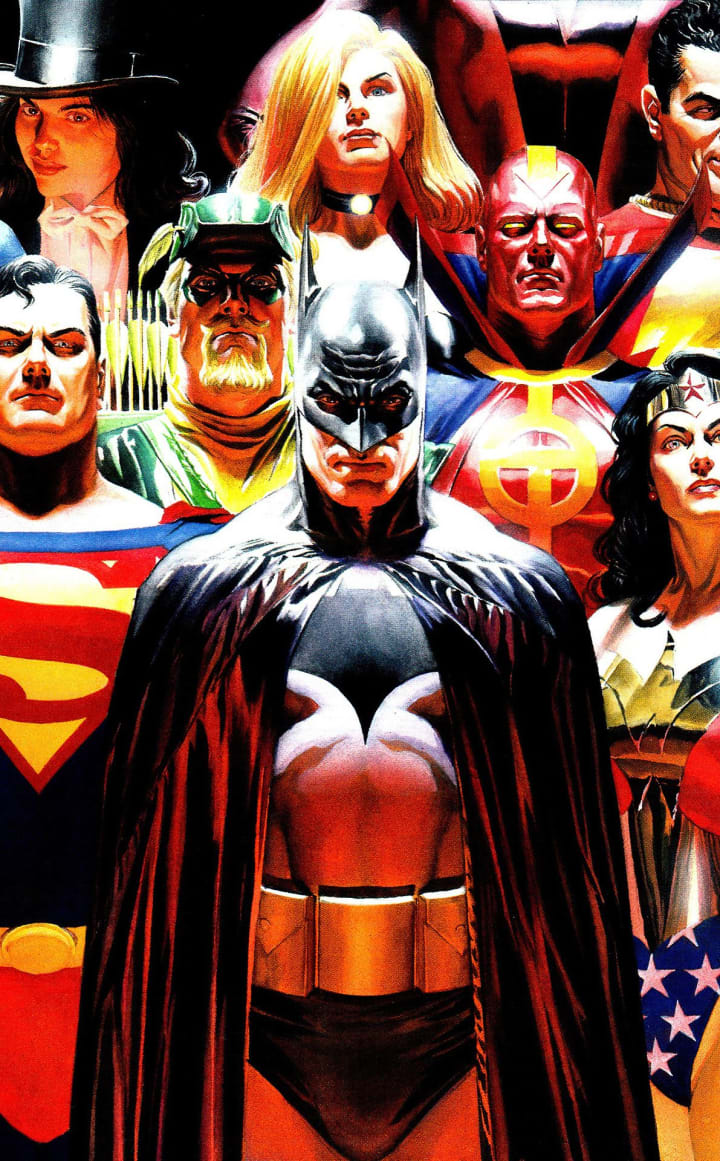
This 12-issue limited series by artist Alex Ross and writer Jim Krueger is essentially the definitive Justice League story. At this point, Ross had done several graphic novels featuring DC's iconic characters alone, including Batman, Superman, Wonder Woman, and Shazam. Here, he had all of them together, fighting their worst enemies: The Legion of Doom.
The series is amazing not only because of the photo-realistic art of the world's greatest heroes, but because it makes each character shine, and shows readers things we've never seen before that show why the Justice League works as a team. These two moments provide two of the best jaw-dropping examples:
In the very first issue Superman, yes Superman, is ambushed by a group including Solomon Grundy, Metallo (the man with the kryptonite heart) and Bizarro. They literally beat the Man of Steel to the ground, forcing him to say, weakly, "Help me." Help arrives in the form of Shazam and the Martian Manhunter, who take care of business. Because even Superman needs a rescue at time
Later in the series, Aquaman is captured and being experimented on by Brainac, who has interest in Aquaman's ability to command aquatic animals. Aquaman is of course frequently mocked as being the Justice League member who swims and talks to fish. But compared to even Aquaman, what does Batman do? He has no powers, and according to the movie, his ability is, "I'm rich," - possibly one of the worst lines ever. Well, "Justice" proves both of those running jokes wrong. On the JLA satellite, the League is stymied in their search for Aquaman. The Earth is a big place, and the oceans take up most of it. Suddenly Batman has an idea. He pulls back the focus of the satellite's observation cameras to show a giant "X" in the ocean, made of fish. Aquaman used his power to command the fish to tell the League where he was. But Batman was the only one who thought to look. Find this series. You'll never forget it.
5. The Boys
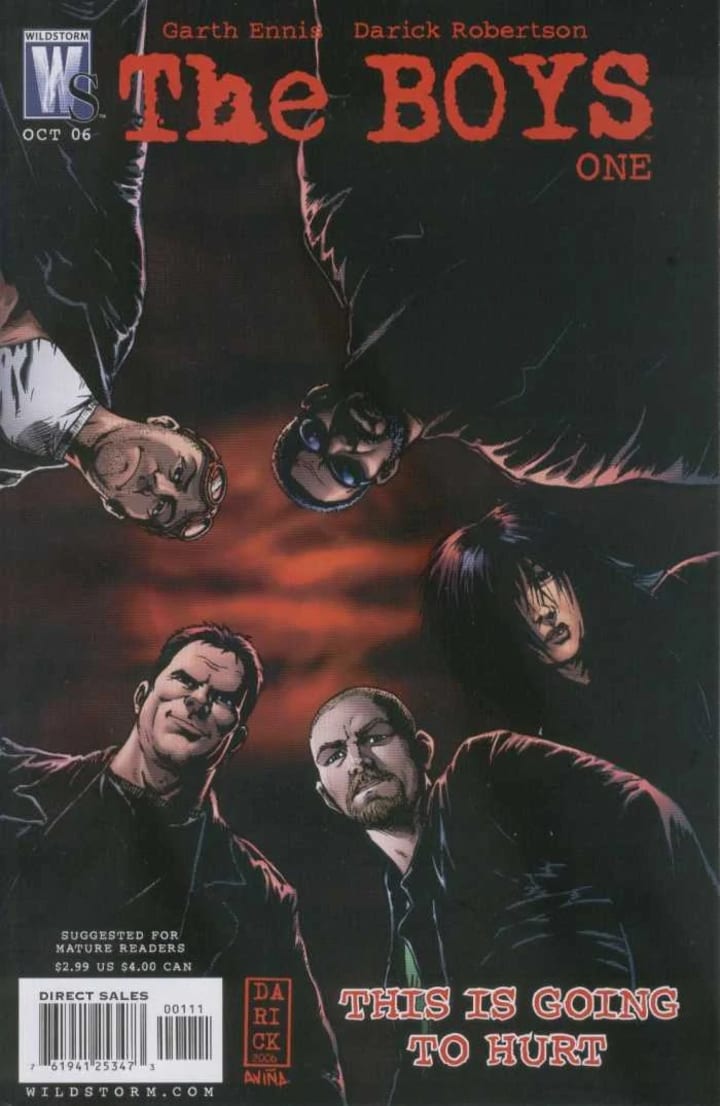
Initially a DC series written by Garth Ennis, the series was cancelled by DC, but continued at Dynamite Comics, where Ennis was given the freedom to be as edgy as he wanted, which as we knew from his previous work on "Preacher" and "Punisher" was very edgy indeed, if you've seen the streaming series.
Ennis has a problem with super-heroes. The black and white, good and evil concept is one that he tends to reject in favor of characters who are more flawed. In the case of this series, super-heroes have become celebrities, similar to the Avengers, but celebrity status results in them acting much more like the other celebrities we see every day, with questionable judgment more than noble intent. "The Boys" are a group of elite CIA operatives charged with keeping the super-heroic community in line, not because of moral superioity, but because they're even nastier badasses.
4. 100 Bullets
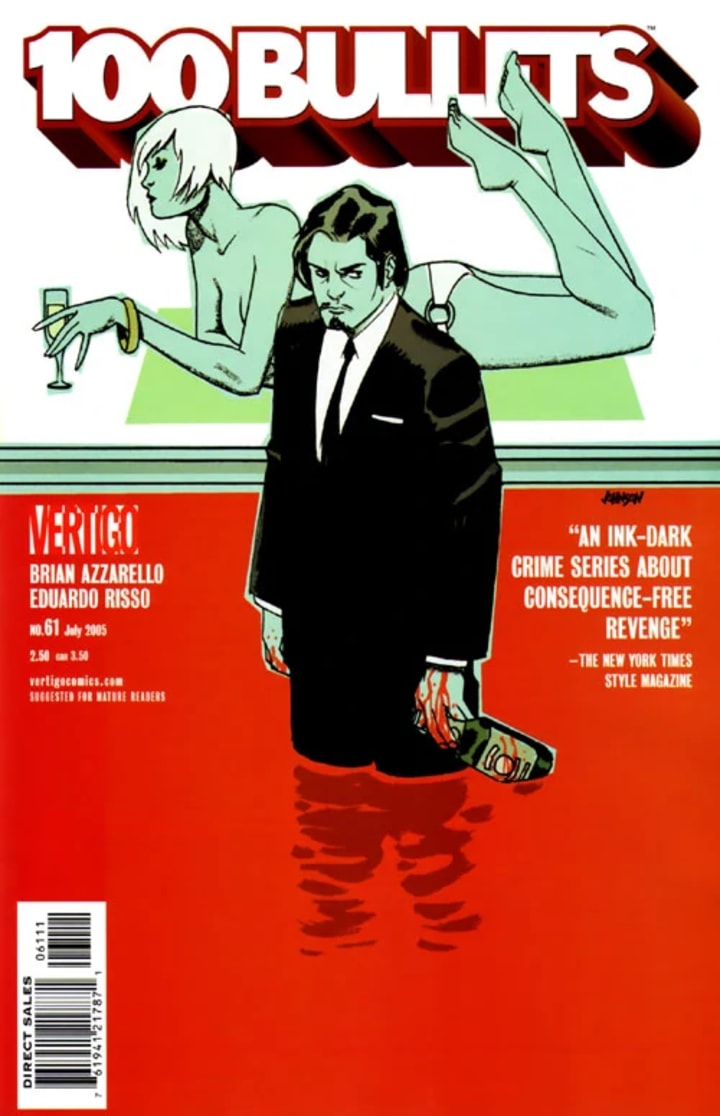
The great thing about DC's Vertigo imprint was it allowed comics to be smarter, not just edgier, and this is a great example. Created by writer Brian Azzarello and artist Eduardo Risso, "100 Bullets" is a dark, dark noir story with elements of spy thrillers and secret societies. Over the course of the 1o0-issue series, readers watch as "Agent Graves" arrives to offer different characters a briefcase with an untraceable gun and bullets, to do with as they choose. Each of them makes different choices, and all of the stories are good. What is even better is the bigger story that is revealed, showing how each of these characters is linked without knowing it, and what Agent Graves' mission truly is. As with "Sandman" and "Preacher" the series has different arcs, but is written with an end goal in mind. You'll just have to read it all, and the ride is more than worth it.
5. Avengers Disassembled (Avengers 500-503, Avengers Finale)
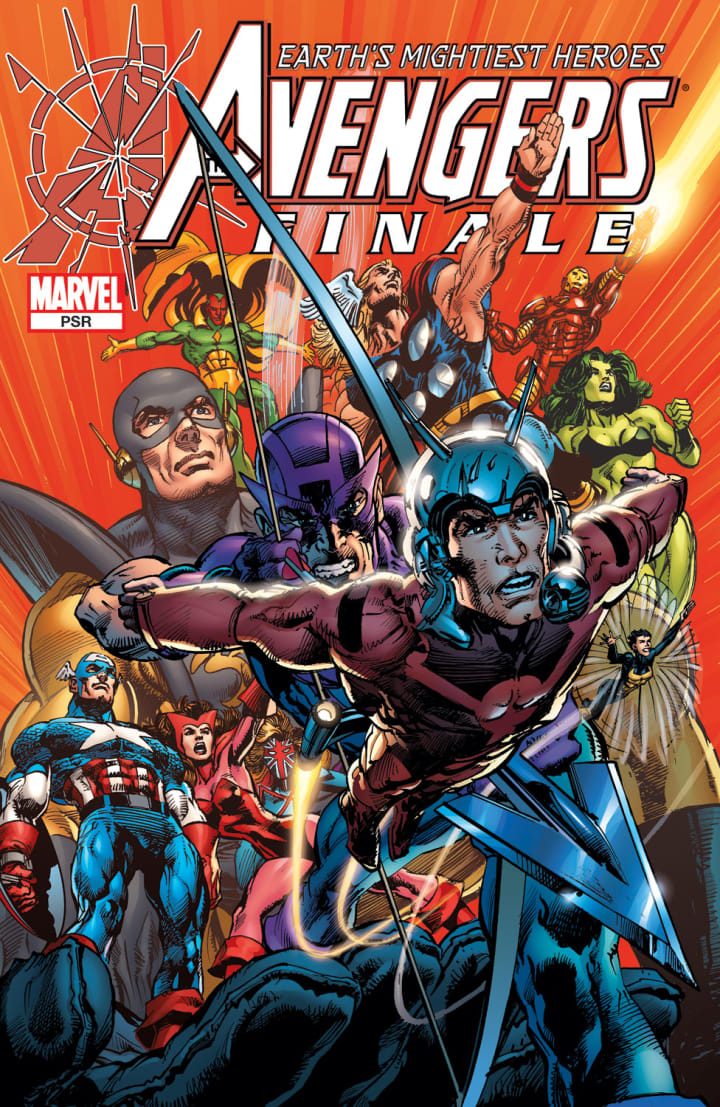
When writer Brian Michael Bendis was brought on board to chronicle the adventures of Earth's Mightiest Heroes, he decided to show that all that kept the team from falling apart was one bad day. Over the course of this story, the team, which has a huge roster of its most powerful members, suffers multiple losses, including beloved longtime members Hawkeye and Vision. At the same time, Scarlet Witch's sanity is questioned once again, as well as the wisdom of including Hulks of any-kind on the team, whether it be the rampaging original or his calmer cousin, She-Hulk.
6. Cage (Marvel Max)
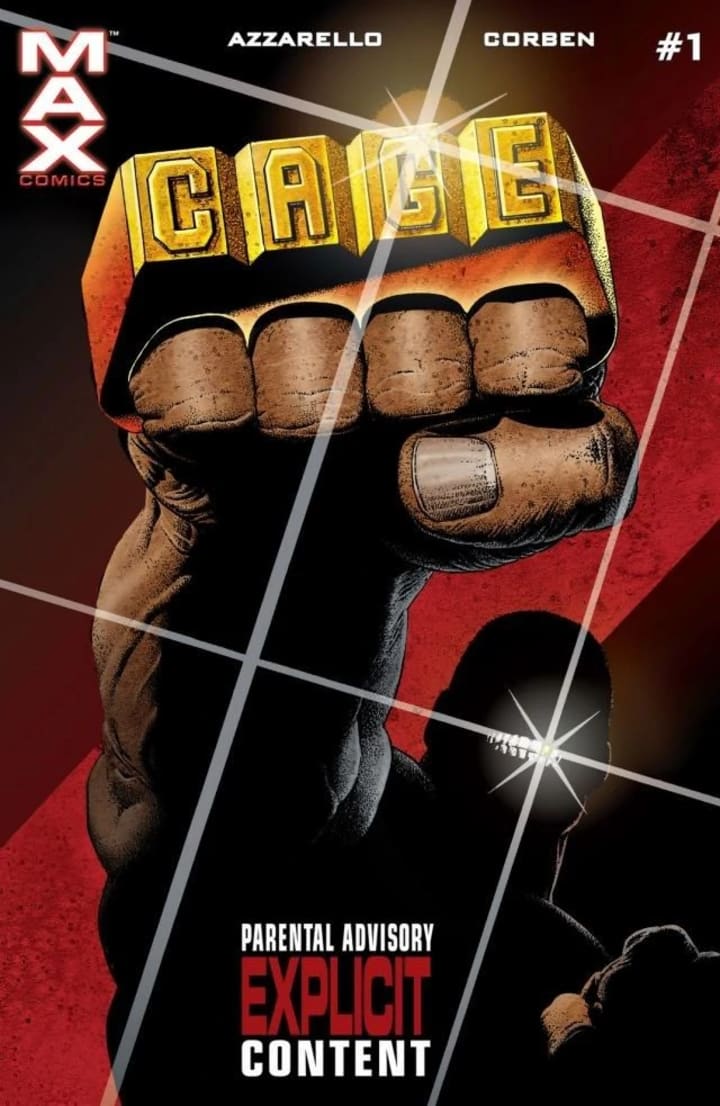
Luke Cage aka Power Man debuted in his own series, "Hero for Hire" in the 70s as part of Marvel's response to popular "blaxsploitation" films such as "Shaft." The character proved to be popular enough that Cage went on to join the Fantastic Four (as a temporary replacement for the Thing) and the Defenders before partnering with Iron Fist (whose solo title had been cancelled), creating the long-running book "Power Man and Iron Fist." But that series came to an end, and Cage's solo series with a new look in the 90s was neither popular nor good, and relaunched "Heroes for Hire" book after that, with Cage, Iron Fist, and a team of other heroes including Black Knight of the Avengers was similarly awful. What Cage needed was the Marvel Max treatment that the Punisher had, and that's what he got.
This mini-series, written by Brian Azzarello of "100 Bullets" fame brought Cage back to his gritty anti-hero roots, possibly more than ever before. In the very first issue we find Cage not in the office of Hero for Hire or in a high-tech headquarters, but in a strip club, as a customer. He's wearing regular street clothes throughout the series, not a yellow silk shirt or cuffed hip boots. In this series, Cage is a man of the street who just happens to have steel-hard skin and enough strength top pick up a tank.
7. Alias
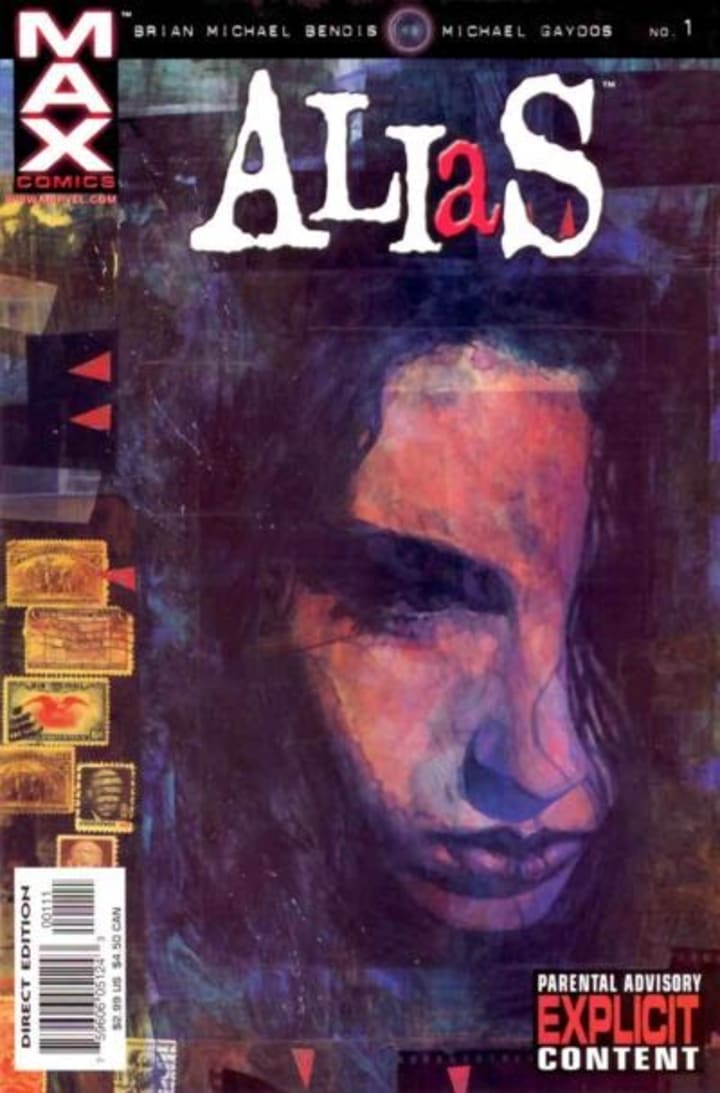
No, not a comic-book adaptation of the spy show featuring Jennifer Garner. This is the comic series that inspired the Marvel Netflix series "Jessica Jones," and it's very good. Written by Brian Michael Bendis, "Alias" is essentially a noir mystery comic that happens to star a woman with super-powers, who drinks and smokes to excess and runs her own private detective agency. What's immediately apparent is her behavior is due to unresolved issues from her past as a superhero. What we learn over the course of the series is what her past was, and what her relationship with other heroes like the Avengers had been, and what they are now.
There are a lot of very good things about the series. One is the realistic depiction of the effect of life on a person's mental well-being. Another is the changes in relationships. Who sticks by you when life gets hard, and who walks away. As a Marvel Max series like "Punisher" and "Cage," "Alias" shows adults being adults and heroes not always being heroic, which provides a lot of room for characters to really come through. The series also does a great job of taking a new character and seamlessly fitting her into Marvel's past, as one of Carol (Ms. Marvel) Danvers' best friends and an ally of the Avengers, who never quite made it big, because life derailed her too soon.
8. The Sentry
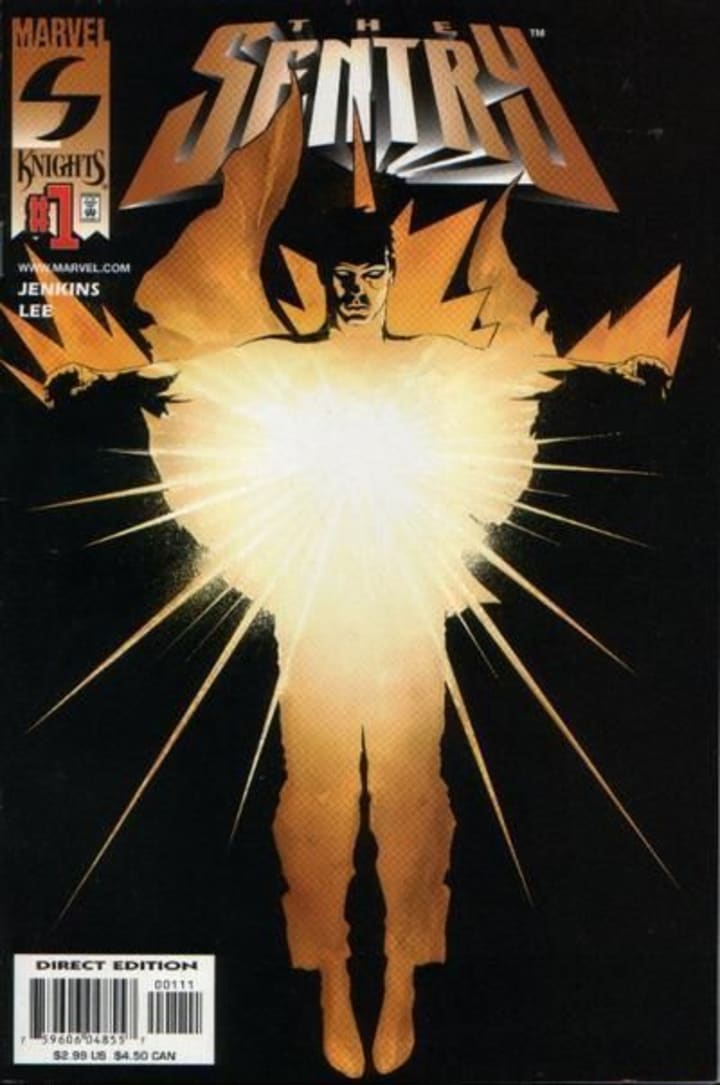
The idea of the Sentry came from an interesting concept: What if there was a Silver Age hero everyone forgot about? And so one was created, with all the earmarks of a classic Stan Lee creation: an alliterative name for his alter ego, Robert Reynolds; a great arch-enemy - The Void; a snappy costume; a classic origin story. This series finds Bob Reynolds in the present day - pudgy and in his 40s, suddenly remembering that years ago, he was the Sentry, one of the most powerful heroes of all. The question is: Why did he forget, and what should he do now?
9. New Avengers
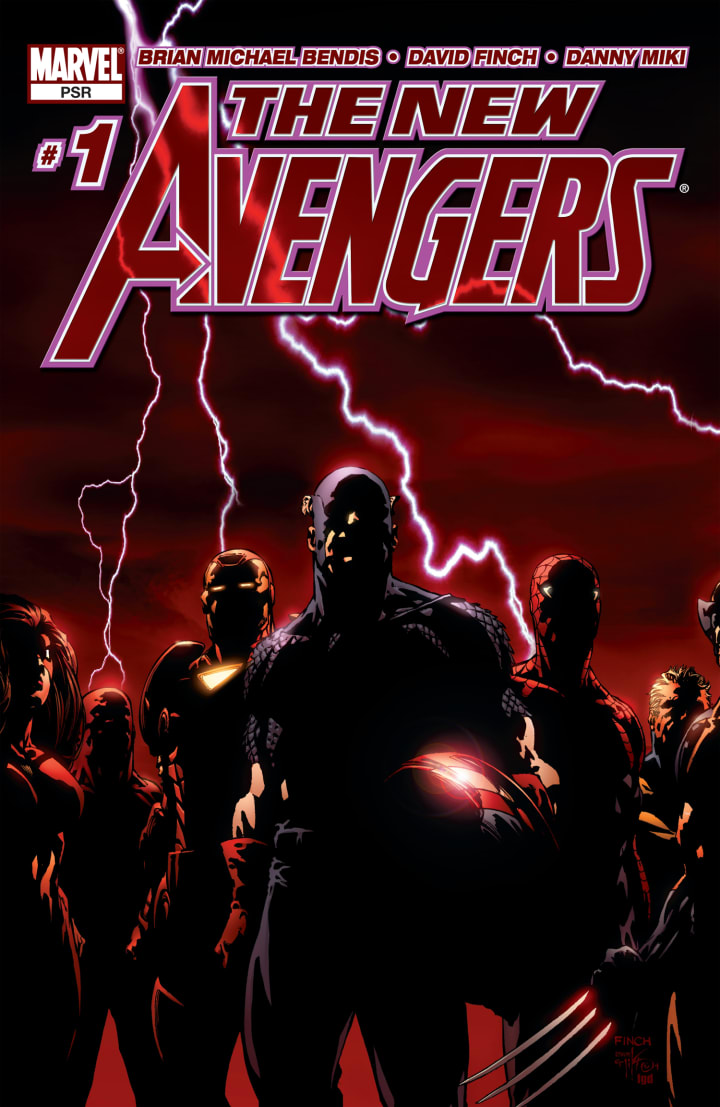
When writer Brian Michael Bendis brought back the Avengers after taking apart the team at the conclusion of the original series, he wanted to have a team that had never been seen before, with some of Marvel's most popular and iconic heroes who had never been Avengers.
The book begins with a breakout at The Raft, the floating maximum security prison for super-criminals. Huge numbers of super-villains on the loose would be a job for the Avengers, but there are no Avengers. Still some super-heroes come together to help, namely Captain America, Iron Man, Spider-Man, Luke Cage, and Spider-Woman. After the initial story, the team goes to the Savage Land and the roster expands to include Wolverine and the Sentry. Being the Avengers, the roster changed now and then, but Wolverine, Spider-Man, and Luke Cage went on to serve on some version of the Avengers almost continually ever since.
10. House of M
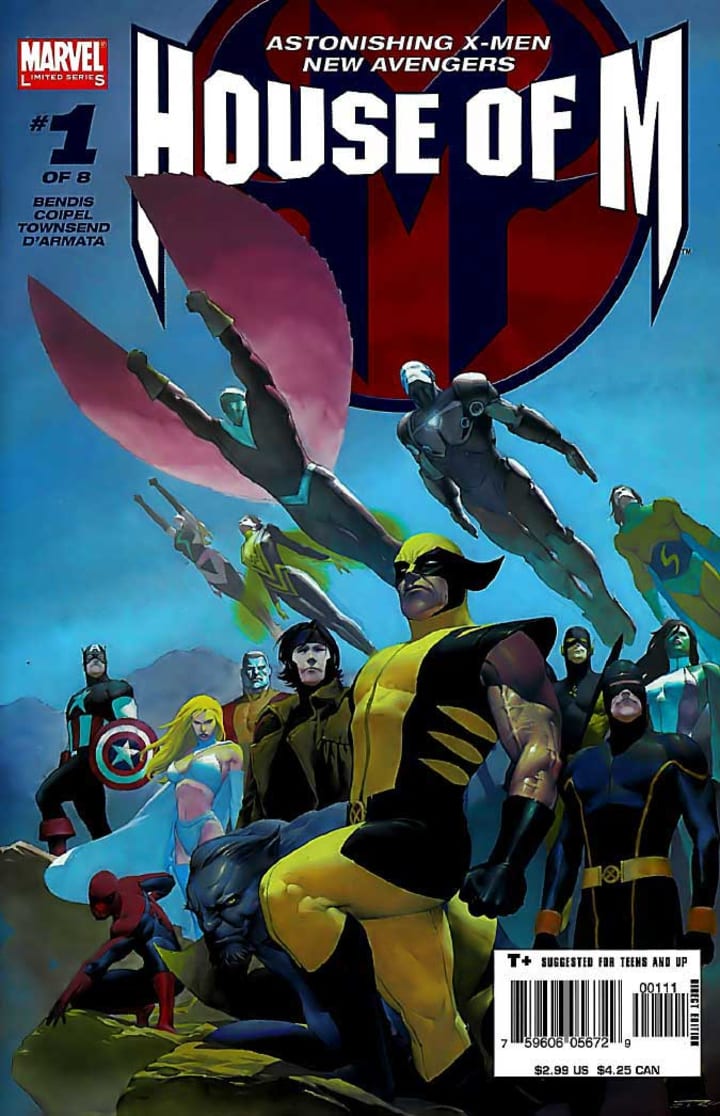
The Scarlet Witch has had some interesting changes to her powers over the years. When she was first a member of the Brotherhood of Evil Mutants and then the Avengers in the 60s, she wasn't very powerful. She had the mutant ability to create "hexes." What's a hex? Pretty much any small plot device that needs to happen. Later, it was explained that her power affects probabilities. Maybe she could make things spontaneously combust, or fall, or fall apart. Plus she learned real magic by studying with Agatha Harkness, Mordred the Mystic, and Dr. Strange. Still later, it was explained that she channeled chaos magic and could affect reality. That's when she got really dangerous, because it seemed using her power had an effect on her mind, and as the daughter of Magneto, she may have had some underlying mental problems to begin with, combined with the potential for great power.
That brings us to House of M, where the Scarlet Witch, still mourning the loss of her twin boys, who were revealed to simply be illusory constructs of her powers, has fully descended into madness and is being monitored and sedated by Magneto, Professor X, and Quicksilver. Trying to create a world where everything is right, she uses her powers to change reality. As a result, mutants are the ruling class, and Magneto is the ruler of all mutants, with Scarlet Witch and Quicksilver forming a kind of royal family. Only Wolverine knows things aren't right, and over the course of the series, similar to Age of Apocalypse, he strives to correct the course of time.
The lasting effects after the series are massive, as the number of mutants, which had gotten out of hand since the 80s and 90s, is drastically reduced to fewer than 200, with major characters like Professor X, Magneto, and the Blob, totally de-powered. On the upside, Hawkeye is brought back to life.
11. Civil War
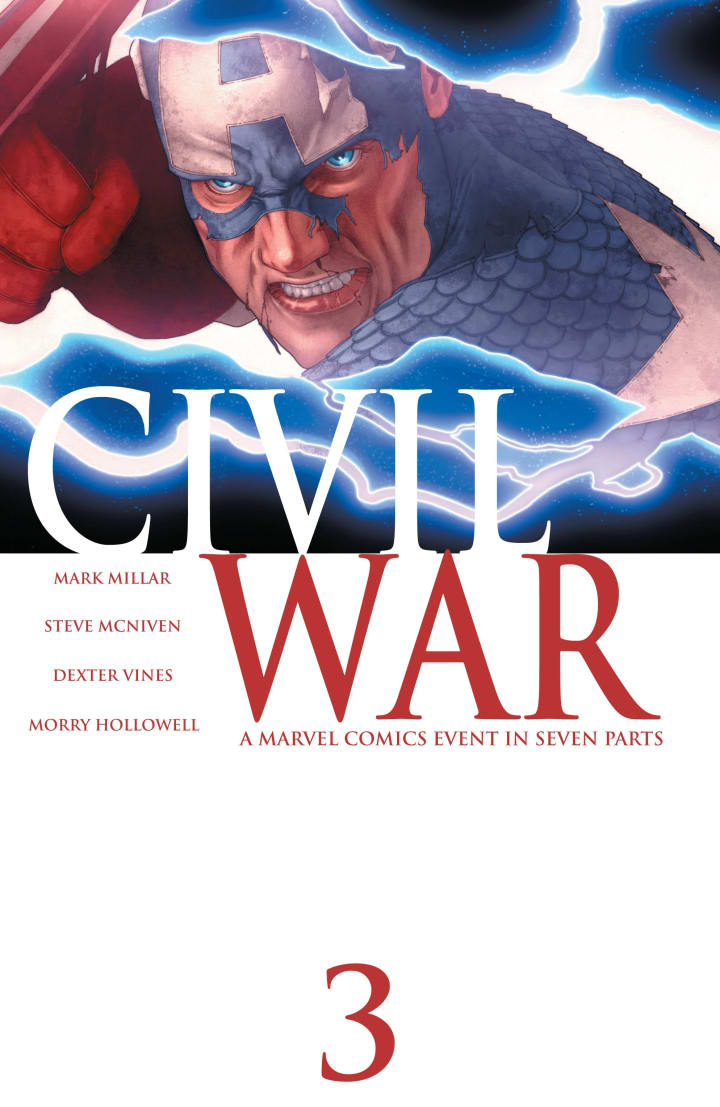
Once again, the movie is different from the comics. The movie is simpler, but the comics are more interesting, and feature a lot more characters.
This storyline in particular illustrates what made the new era of Avengers and this new stage of Marvel so much better than the previous two decades. When big company crossovers first became a thing in the 80s, they tied in a lot of series but you didn't have to read every tie-in to know what was going on, just the main book, and sometimes the effects of the series didn't last long. In the 90s the crossovers got to be really big, and constant. They went from an annual summer event to two or three big events per year, with one right after the other with no breathing room in-between. This disrupted the ability of the writers of each book to do the key job of telling the story of each character in the book.
In the early 2000s, Marvel, and in particular Bendis, had an overall plan. With both the X-Men and Avengers at the core of the Marvel Universe, everything that happened to them affected everyone, so events were big. And each event built on the other organically, so nothing felt forced, you were never lost. There was just more tension, more developments that moved the story along without discarding what had happened before. In short - good storytelling that sold lots of comics, not lots of comics selling due to holofoil covers, though variant covers are still a thing.
With Civil War, the newly reorganized team of younger heroes, the New Warriors, has a catastrophic confrontation with the super-villain Nitro in Stamford, Connecticut that results in the death of several hundred people as well as some of the New Warriors. This leads the United States government to pass an act requiring all superhumans to register with the government so their activities can be tracked and monitored. Similar to registering a firearm, but with living beings.
This creates a divide in the superhero community. There had been previous attempts to force registration on different factions of people. The Mutant Registration Act was opposed by the X-Men and other mutants, and some of the Avengers opposed limits put on them when they were a government-sanctioned team.
As in the movie, on the pro-registration side we have Iron Man, who was already working with the government at the time. He believes the loss of freedom is worth the level of protection to the public provided by the Act. On the other side is Captain America, who is always in favor of freedom. He believes the job of the government is to protect the public, but not at the expense of individual liberty, and it's the role of the superhero community to protect the public from all threats, including the over-reach of the government.
This difference becomes more than philosophical when the government then orders the heroes who have registered to round up the heroes who have not. This creates two and even three teams of Avengers, with the New Avengers, led by Captain America, opposed to registration and working as outlaws. The other, officially sanctioned Avengers are hunting them while also stopping other threats. In the middle is Spider-Man, who admires both Captain America and Iron Man and sees both points of view. To try to set an example, he reveals his secret identity on live TV, which ends up being the biggest mistake of his life.
12. Return of the Winter Soldier
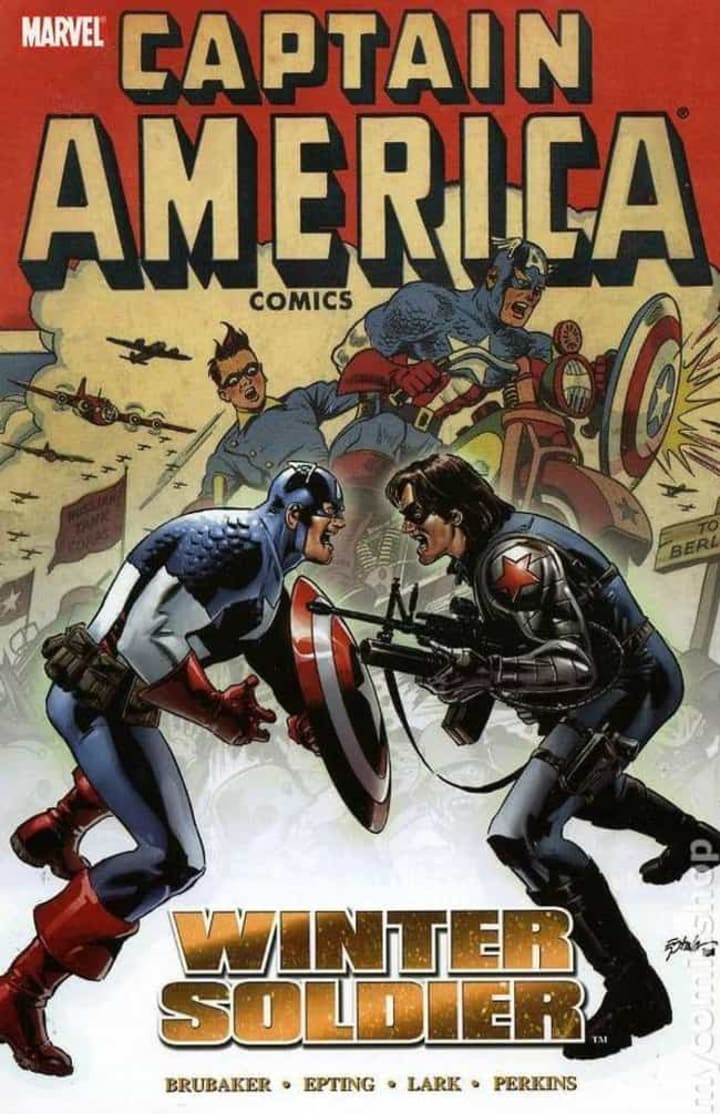
Because of the Marvel movies and TV tie-ins, more people probably know who the Winter Soldier is now than people who knew who Bucky was in the previous 30 years. The Winter Soldier storyline in the MCU is reasonably close to what was in the comics, but once again, what was in the comics is better and more detailed.
The basic facts are the same: Bucky was Captain America's friend in World War Two. They were in the Army together, in the same unit. Bucky was thought to be killed in a mission with Cap, but he was recovered by the enemy and kept alive through cryogenics for decades so he could be used as a brainwashed assassin known as the Winter Soldier. Decades later, Cap and the Winter Soldier encounter each other and after a deadly struggle Cap goes through the layers of brainwashing and turns his friend back to the side of good. Winter Soldier actually joins the New Avengers after a time and takes up the mantle of Captain America to honor the tradition of Steve Rogers.
The key differences are, in the films Bucky was already an adult in the Army, serving in a unit with Cap, and he's discovered by Hydra. In the comics, Bucky lied about his age to serve in the Army, and he and Cap were both members of the Allied super-team the Invaders. Bucky was found by the Russians and made an operative of the Soviet Union during the Cold War, sometimes working alongside the Black Widow when she was still a Soviet spy. They had a relationship then, which continues when both of them work with the Avengers in the present day. Black Widow is probably the love of Bucky's life, and the story of the two of them switching sides and serving on the Avengers together is a good one.
12. Siege
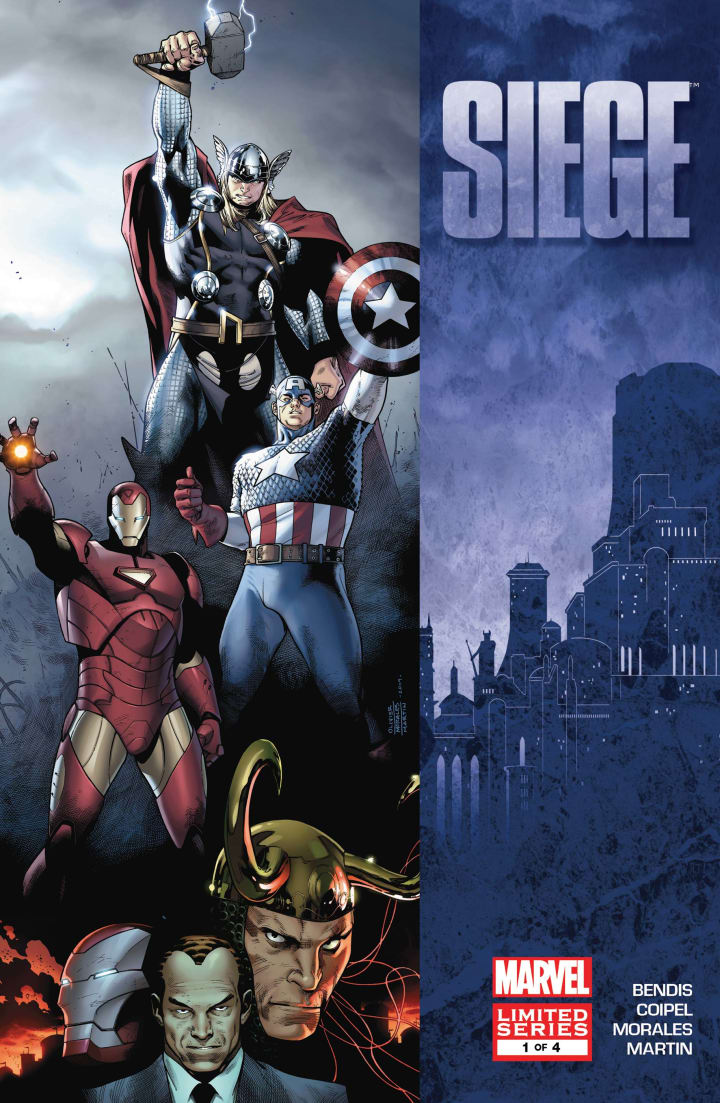
"Siege" is the culmination of the decade's storylines in the Marvel Universe. As noted earlier, what was great about the Bendis era of Avengers is that the stories all worked together and they were leading to something, which was this. Bendis's first story arc broke up the original Avengers. Then he forged the New Avengers, who were splintered by "Civil War." In "Siege" Thor's realm of Asgard has physically descended to Earth. The government reacts to this as a threat and sends the officially-sanctioned team of Avengers to take control of the situation, except those Avengers are the so-called "Dark Avengers" led by Norman Osborn, the Iron Patriot and his team of semi-reformed villains. Putting aside their differences in order to face this common enemy, all of the Avengers, all of Marvel's heroes come together at last.
13. Old Man Logan (Wolverine vol. 3 66-72, Giant-Size Old Man Logan #1)
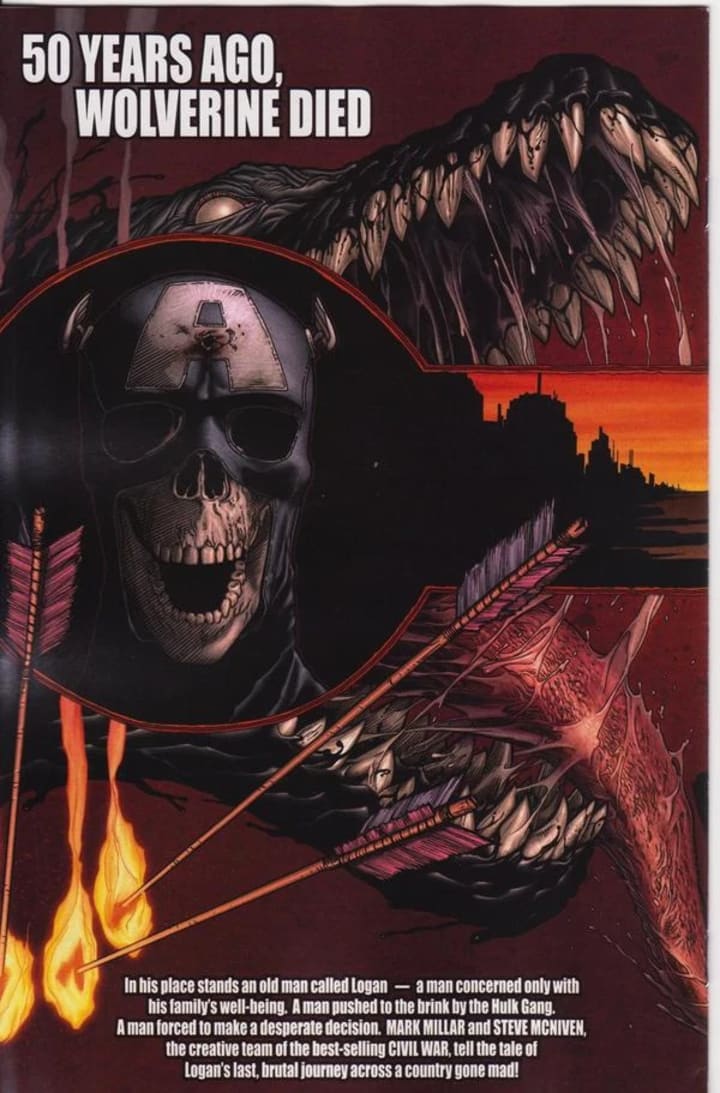
If you've seen the movie "Logan," in which an aged Wolverine cares for an aged Professor X and sets off on the road with a new mutant, you know it's the best of the solo Wolverine films. This story is the inspiration for that film, but the plot is very different. It's also possibly the best Wolverine story ever.
Set 50 years in the future, "Old Man Logan" is the tale of a dystopian world in which the heroes fell long ago and the villains have taken over. The Red Skull is president of the United States, and the country is divided into many territories run by super-villains and their descendants. Hawkeye, now old and blind, enlists Logan on a cross-country mission that will hopefully start a new super-team to take back the country. Except Logan is old as well, and he has been a pacifist for the past 50 years.
14. New Avengers Illuminati
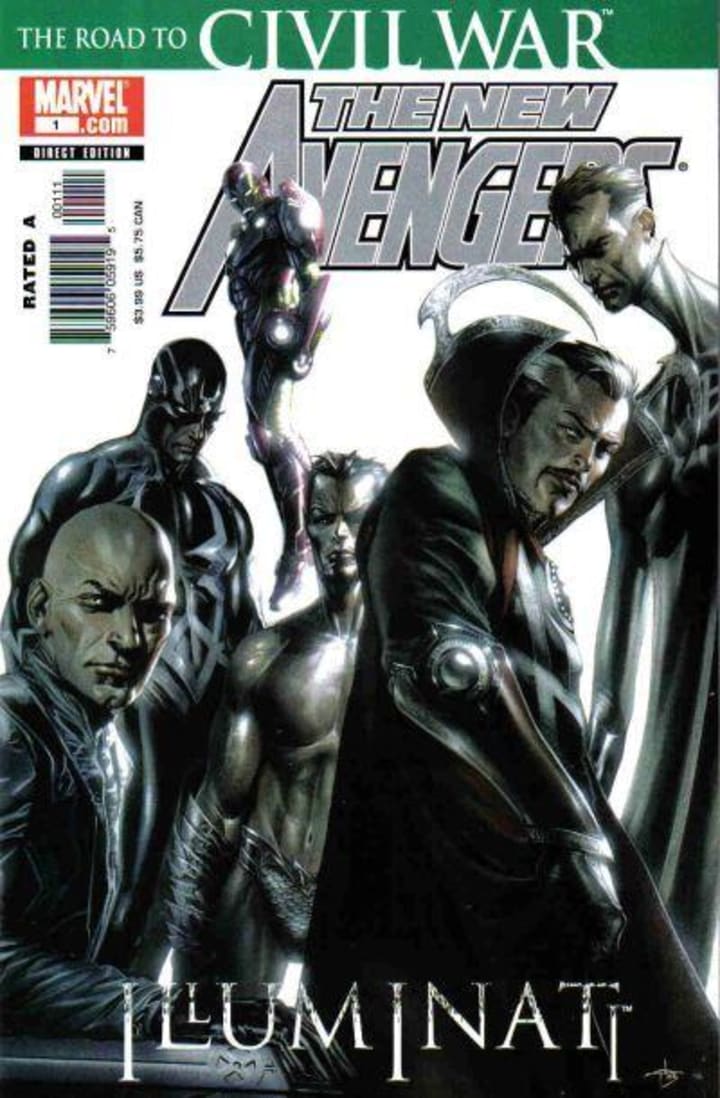
The idea of Marvel's Illuminati is simple, and it fits right in with the core idea of the Marvel Universe, which is why it continues: In the Marvel Universe the leaders of the most powerful superhuman groups meet from time to time to discuss matters that affect them all.
This seems to be a reasonable, sensible situation. Except it raises the same question as other secret societies in real life: If this is a good idea, why do they meet in secret? Whose interests are they really representing? Shouldn't members of the groups they're representing have a say in the decisions they're making? These are valid questions at the heart of the series, which go on to affect bigger events in the Marvel Universe, such as the Civil War.
The Illuminati are: Mr. Fantastic, leader of the Fantastic Four; Prince Namor the Sub-Mariner of Atlantis; Professor X, founder and leader of the X-Men; Iron Man, co-founder and sometime leader of the Avengers; Black Bolt; leader of the Inhumans and king of Attilan; and Dr. Strange, Sorceror Supreme and de-facto leader of the Defenders. The Black Panther, leader of Wakanda, was asked to join but refused because he thought it was wrong. Captain America was also asked to join and he also thought it was wrong and had to have memory of the gathering wiped from his mind to prevent him from opposing the group. That action illustrates the inate problem with the idea of the group, yet the magnitude of the events they meet to discuss over the years, such as the Infinity Gauntlet and the Kree-Skrull War, show the need for the group to exist.
15. Planet Hulk (Incredible Hulk vol. 2 92-105, Giant-Size Hulk #1)
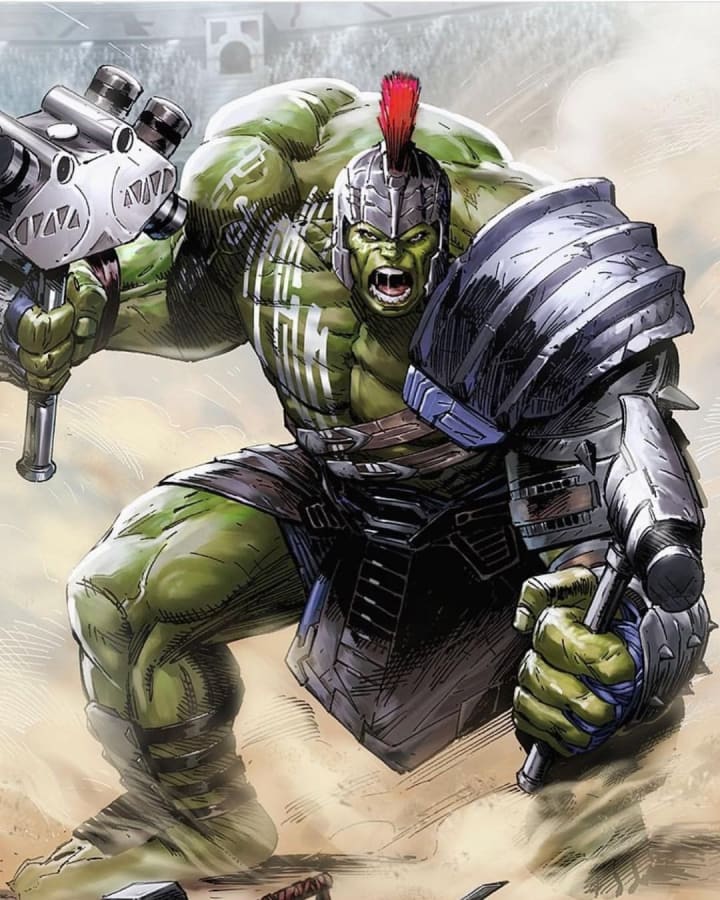
If you've seen "Thor: Ragnarok" what you've actually seen is the film version of "Planet Hulk," co-starring Thor. This story illustrates more than any other the effects of having a group like the Illuminati. After years of responding to threats posed by the Hulk's instability, the Illuminati decide that even though most of them consider the Hulk a friend, he is exactly the kind of issue they should address, otherwise they are hypocrites. He has had his intellect restored, he has been an effective teammate and hero, yet time and again circumstances have resulted in him causing wide-spread damage with the potential for loss of life. So they combine their abilities and find a remote planet where Hulk can live as he wishes, but never return. They trick him, capture him, and send him to that planet.
On the planet, Hulk is attacked and enslaved, but like other born warriors he survives, then thrives, because Hulk is the strongest there is. He becomes a gladiator, then the planet's warrior-king, complete with a wife and son. And while it's largely the life he has always wanted, what he secretly wants is revenge. Which leads to...
16. World War Hulk
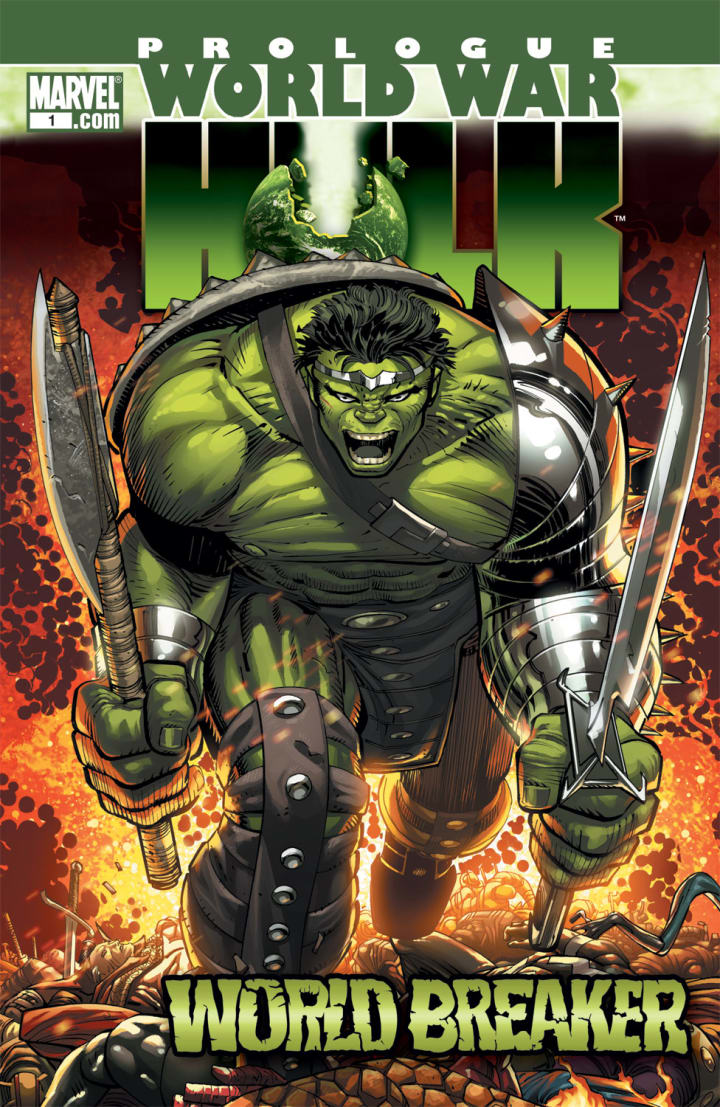
When his wife dies in an explosion, the Hulk finally returns to Earth with his alien followers, seeking revenge on the Illuminati. The heroes of Earth cold barely stand against the Hulk before, when his intelligence was child-like and he was alone. But this Hulk is both intelligent and savage, and he has a team of warriors. These factors enable him to cut a swath through all of the heroes, so he can capture the Illuminati and force them to fight each other to the death, just as he had fought for his own survival during his time in exile.
This storyline officially ended the Hulk's series, with the title changing to "The Incredible Hercules" afterward.
17. Red Hulk (Hulk vol. 2)
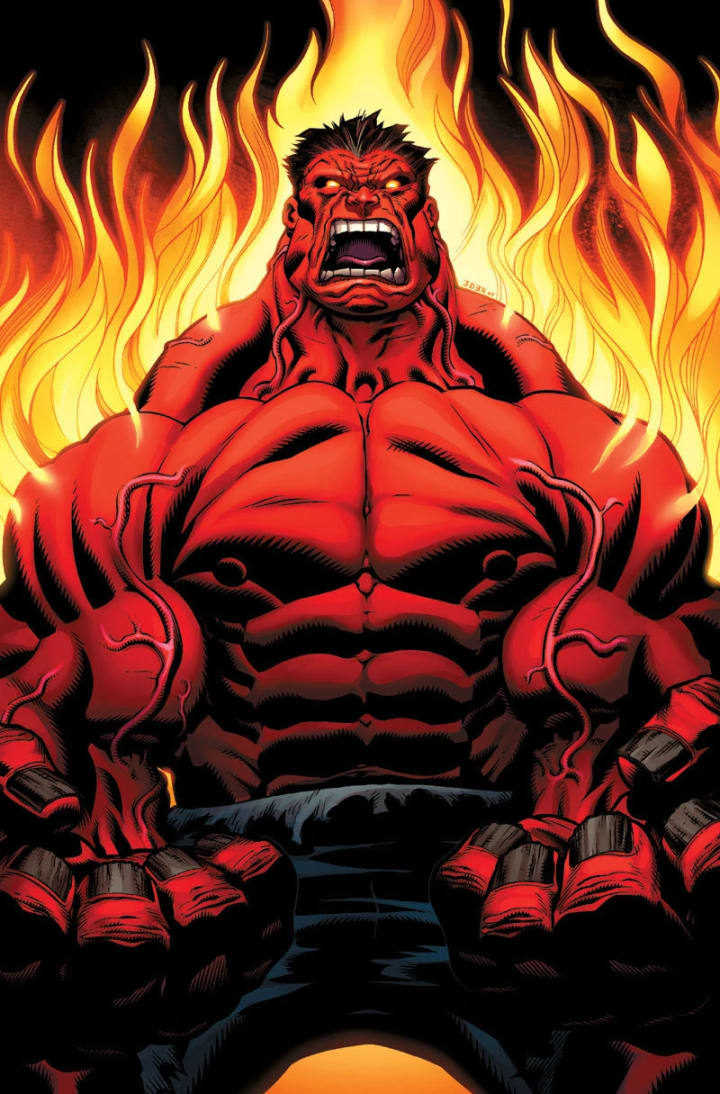
The story of the Red Hulk was a mystery for some time and a great one. Everyone knew Bruce Banner was the Hulk, but Banner had been in custody since the end of World War Hulk. So who was causing all this Hulk-like damage? Once this new Hulk was spotted, why was he red? And why was he giving off heat? All these questions had to be answered, and they were over time, even as the Red Hulk clashed with Banner, and other heroes, while being incorporated into the heart of the Marvel Universe, joining the Avengers, and even leading a bold new team of Thunderbolts featuring the Punisher, Elektra, Ghost Rider, and the Leader. Those were great developments. But it all started with the question: Who is the Red Hulk?
18. Annihilation
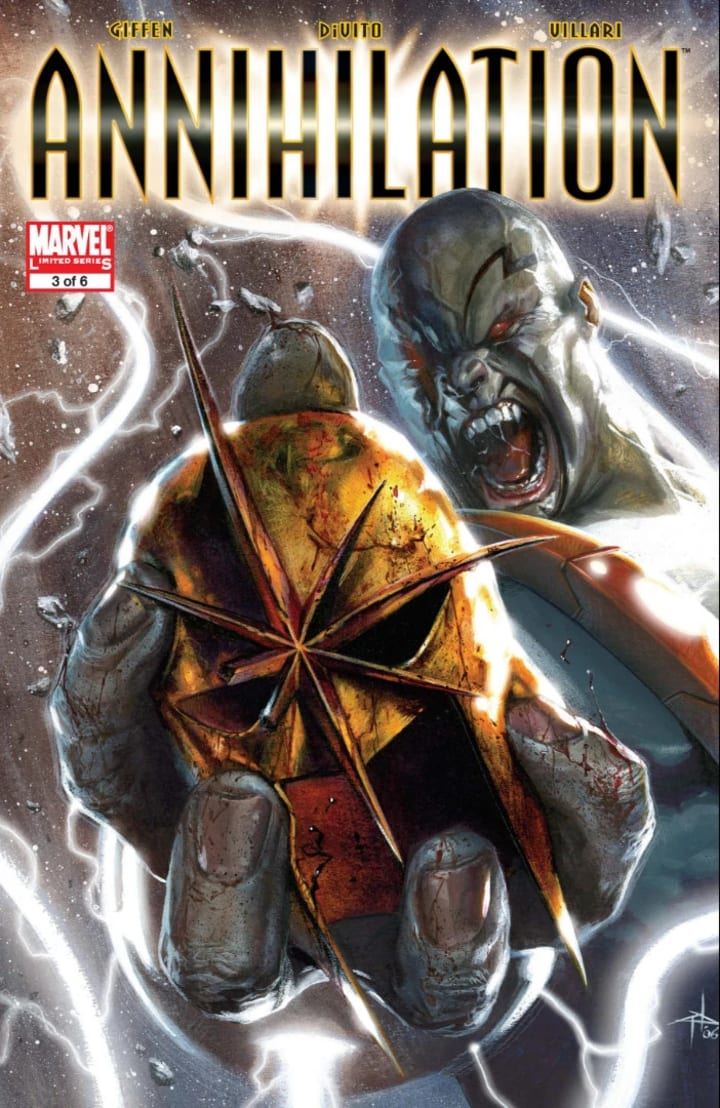
It seems unlikely now, but for most of Marvel's 80+ year history, no one cared about Groot or Rocket Raccoon. That changed with this series, which introduced the team now known as the Guardians of the Galaxy.
Marvel has a good number of cosmic heroes such as Nova, Quasar, and the Silver Surfer, and for the most part they're out there in space going unused until there's a story involving Earth characters going into space, or aliens coming to Earth. In this series we get to see something different: One conflict that brings most if not all of Marvel's space-based characters coming together. For the first time we see something akin to "Star Wars," with a culture in space. Space bars, space slang, all of the things we came to love in the "Guardians of the Galaxy" films, including the Guardians, here for the first time.
19. Hush (Batman 608-619)
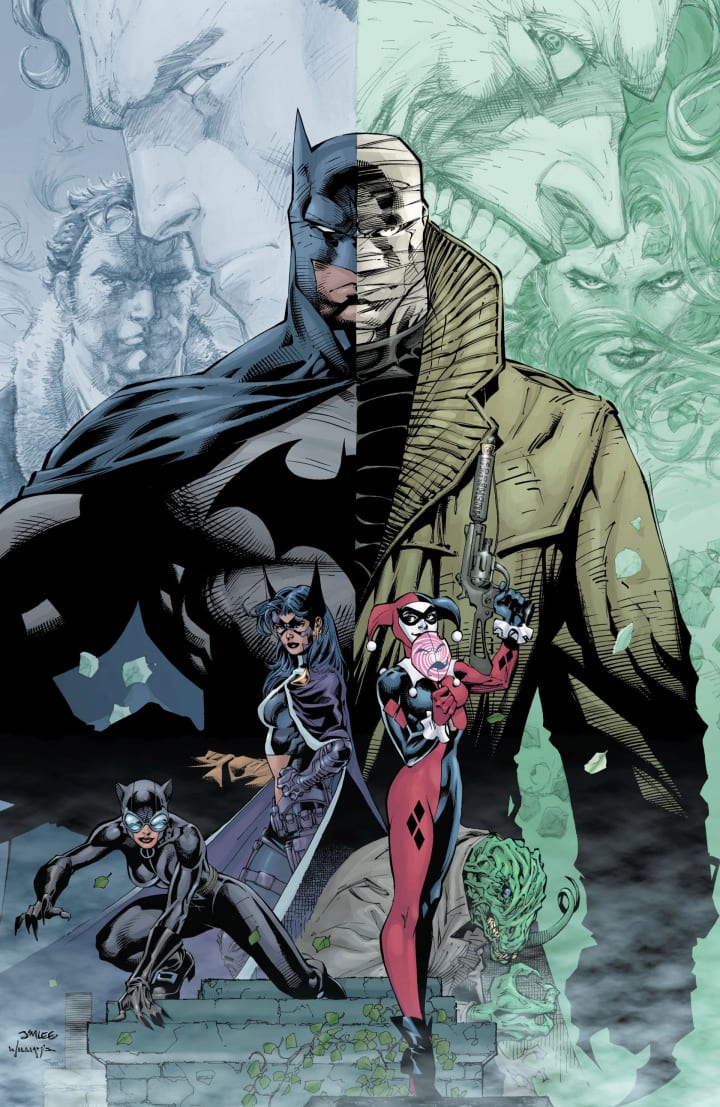
If you know your comics history, you remember that Image Comics was formed when a number of A-List artists left Marvel and DC to form their own company and work with their own creations, like Spawn, Bloodshot, and Savage Dragon. Marvel had already brought back Jim Lee and Rob Liefeld to work on the Avengers and Fantastic Four during Marvel Reborn. But several years later, DC worked out a deal to incorporate Image, giving Jim Lee a major role. At the same time, Lee went to work on one of the greatest Batman storylines for years, "Hush."
"Hush" doesn't reinvent Batman or retell his origin the way "Batman Year One" did, but it does provide a great mystery, a great new villain, and a showcase for all of the key characters in Batman's world. Hush is the name of the villain with the bandaged face, who seems to know everything there is to know about Batman, and is using it against him. Over the course of the story, it brings Batman into conflict with the best villains in his rogues gallery, while also brining in Catwoman, Nightwing, and Superman, all of whom get an artistic upgrade at the hands of Jim Lee. An outstanding story with excellent art and writing, it's everything a great comic storyline should be.
20. The Walking Dead
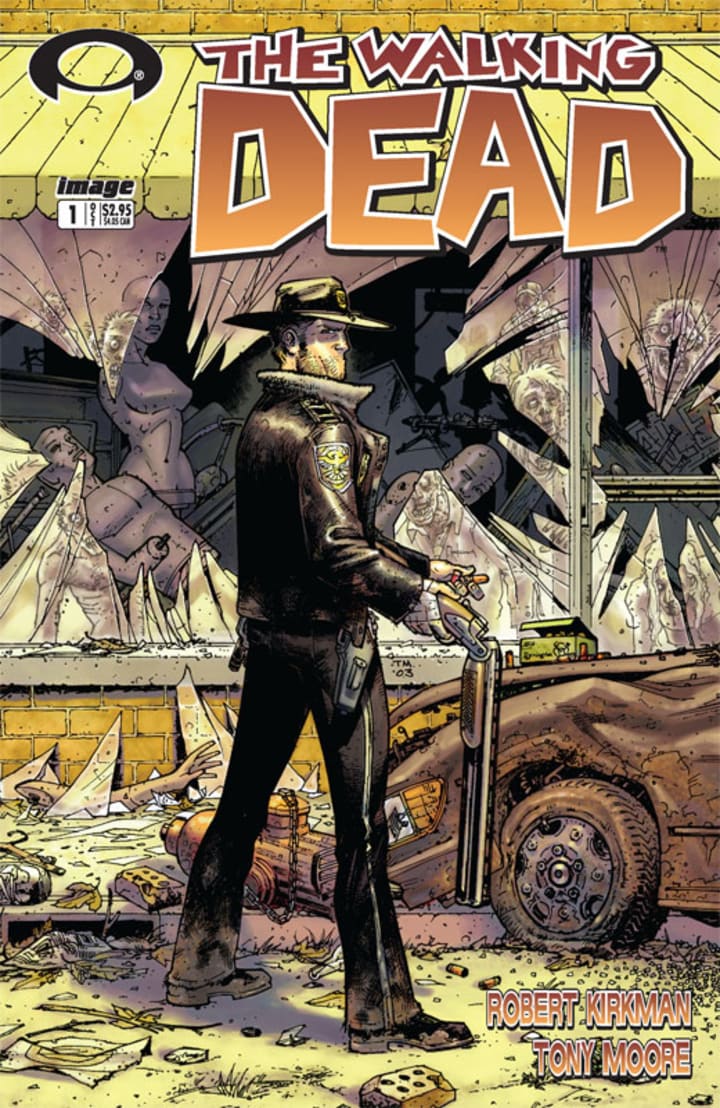
At this point you would have had to have been completely shut off from all film, television, and modern media to have avoided all reference to the cultural phenomenon started by the tv series "The Walking Dead." There have been several spin-offs, and even a show devoted to just talking about episodes with interviews of the cast. But it all started with this comic, which concluded several years ago, while the show and its spin-offs continue on.
As noted with the other comics mentioned above, the comic is not the same as the show. The show is based on the comic, and creator Robert Kirkman has been with the show since the beginning, but there are differences, and the longer the show has gone on, the greater the differences.
1. No Daryl. He was created entirely for the show.
2. Some of the events of the comics play out in different order on the show.
3. Some characters who live on the show die in the comics and vice versa.
However, both the show and the comics are good. If you like your zombies, and good storytelling, you should check the series out.
About the Creator
Gene Lass
Gene Lass is a professional writer, writing and editing numerous books of non-fiction, poetry, and fiction. Several have been Top 100 Amazon Best Sellers. His short story, “Fence Sitter” was nominated for Best of the Net 2020.
Enjoyed the story? Support the Creator.
Subscribe for free to receive all their stories in your feed. You could also pledge your support or give them a one-off tip, letting them know you appreciate their work.
Reader insights
Outstanding
Excellent work. Looking forward to reading more!
Top insights
Excellent storytelling
Original narrative & well developed characters
Expert insights and opinions
Arguments were carefully researched and presented
Eye opening
Niche topic & fresh perspectives
Heartfelt and relatable
The story invoked strong personal emotions




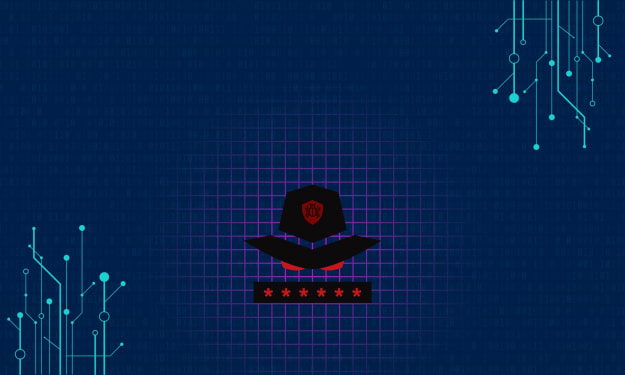

Comments (1)
These covers are crazy good :o